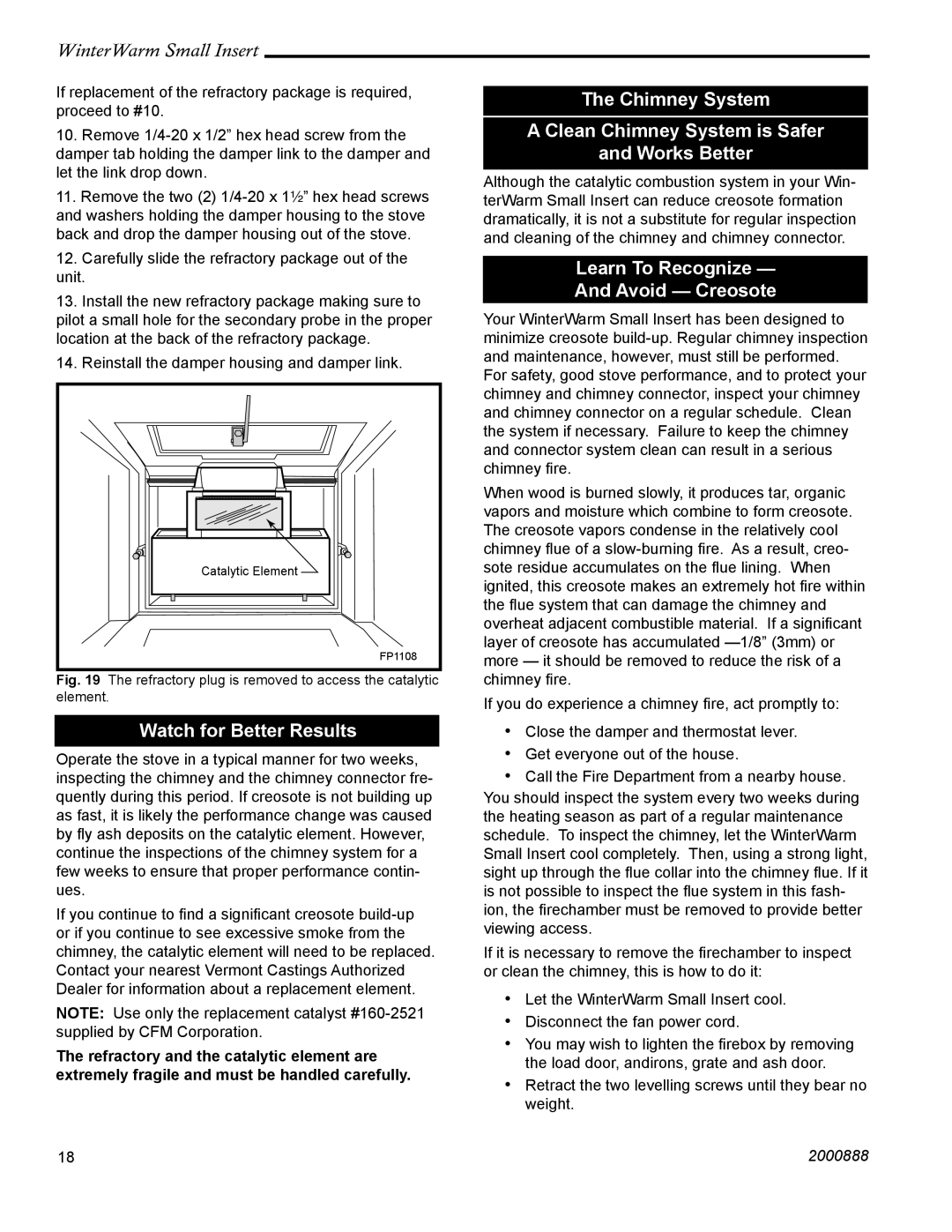
WinterWarm Small Insert
If replacement of the refractory package is required, proceed to #10.
10.Remove
11.Remove the two (2)
12.Carefully slide the refractory package out of the unit.
13.Install the new refractory package making sure to pilot a small hole for the secondary probe in the proper location at the back of the refractory package.
14.Reinstall the damper housing and damper link.
| Catalytic Element |
| FP1108 |
Fig. 19 | The refractory plug is removed to access the catalytic |
element. | |
Watch for Better Results
Operate the stove in a typical manner for two weeks, inspecting the chimney and the chimney connector fre- quently during this period. If creosote is not building up as fast, it is likely the performance change was caused by fly ash deposits on the catalytic element. However, continue the inspections of the chimney system for a few weeks to ensure that proper performance contin- ues.
If you continue to find a significant creosote
NOTE: Use only the replacement catalyst
The refractory and the catalytic element are extremely fragile and must be handled carefully.
The Chimney System
A Clean Chimney System is Safer
and Works Better
Although the catalytic combustion system in your Win- terWarm Small Insert can reduce creosote formation dramatically, it is not a substitute for regular inspection and cleaning of the chimney and chimney connector.
Learn To Recognize —
And Avoid — Creosote
Your WinterWarm Small Insert has been designed to minimize creosote
When wood is burned slowly, it produces tar, organic vapors and moisture which combine to form creosote. The creosote vapors condense in the relatively cool chimney flue of a
If you do experience a chimney fire, act promptly to:
•Close the damper and thermostat lever.
•Get everyone out of the house.
•Call the Fire Department from a nearby house.
You should inspect the system every two weeks during the heating season as part of a regular maintenance schedule. To inspect the chimney, let the WinterWarm Small Insert cool completely. Then, using a strong light, sight up through the flue collar into the chimney flue. If it is not possible to inspect the flue system in this fash- ion, the firechamber must be removed to provide better viewing access.
If it is necessary to remove the firechamber to inspect or clean the chimney, this is how to do it:
•Let the WinterWarm Small Insert cool.
•Disconnect the fan power cord.
•You may wish to lighten the firebox by removing the load door, andirons, grate and ash door.
•Retract the two levelling screws until they bear no weight.
18 | 2000888 |
